|
|
| Übersicht – Contents: | |
Diese Seite ist Teil des Projektes
|
|
| Übersicht – Contents: | |
Flagge – Flag: |
|
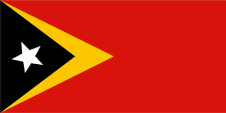 |
National-, Staats und Handelsflagge |
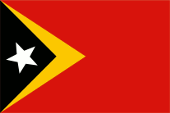 |
Variante in abweichenden Proportionen |
historische Flaggen – historical Flags: |
|
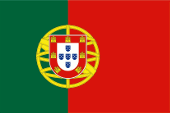 |
1911–1976, |
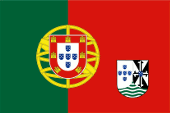 |
60-er Jahre 19. Jhd. / sixties of the 19th cent., |
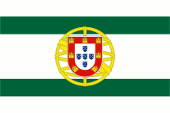 |
bis/to 1935, Flagge eines Oberkommissars – flag of a High Commissioner, Seitenverhältnis – ratio = 2:3, Quelle/Source, nach by: Flaggenbuch 1939 |
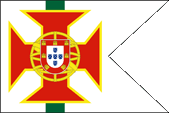 |
1935–1961, Flagge eines Distriktskommandanten – flag of a District Commandant, Seitenverhältnis – ratio = 2:3, Quelle/Source, nach by: Flaggenbuch 1939 |
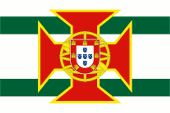 |
1935–1975, Flagge des Generalgouverneurs – flag of the Governor General, Seitenverhältnis – ratio = 2:3, Quelle/Source, nach by: Die Welt im bunten Flaggenbild  |
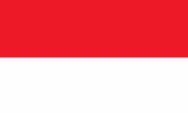 |
1975–1999, |
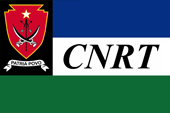 |
1998–2001, |
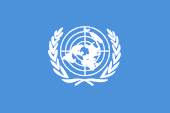 |
1999–2002,   |
| Die
heutige Flagge Osttimors ist exakt die gleiche Flagge, wie sie bei der
Erklärung der Unabhängigkeit am 28.11.1975 angenommen wurde. Sie wurde am
20.05.2002 offiziell wieder eingeführt, und zeigt ein einfarbiges rotes
Grundtuch, sowie an der Mastseite zwei übereinanderliegende gleichschenklige
Dreiecke. Unten ein goldenes Dreieck, so breit wie die Hälfte der Länge der Flagge, und darüber ein schwarzes Dreieck, so breit wie ein Drittel der Länge der Flagge. Im schwarzen Dreieck liegt ein weißer fünfzackiger Stern, der mit seiner oberen Spitze in das linke Obereck zeigt. |
The today’s flag of East Timor is exactly the same flag like it was adoped in context with the declaration of independence on the 28th of November in 1975. It was officially re-introduced on the 20th of May in 2002 and shows a single-coloured red bunting, as well as on the pole two on top of each other lying down isosceles triangles. Below a golden triangle as wide as the half of the length of the flag and above a black triangle as wide as a third of the length of the flag. In the black triangle is placed a white five-pointed star which points with its upper point in the direction of the upper left corner of the flag. |
| Das Erscheinungsbild der Flagge ist zuletzt in der Verfassung des Landes, in Teil I Abschnitt 15, im Jahre 2002 festgelegt worden. Die Proportionen sind mit 1:2 beschrieben. Der weiße Stern hat mit seinem oberen Zacken in die linke obere Ecke der Flagge zu zeigen. Die Farben sind nicht genau festgelegt, lediglich als "Gelb" und "Rot" was sich im Laufe der Zeit als Pantone 123 für Gelb und Pantone 485 für Rot durchgesetzt hat. In der Praxis sind jedoch etliche Varianten der Flagge zu finden, mit unterschiedlich hellen oder dunklen Gelb- und Rottönen, mit anderen Proportionen (meist 2:3) oder mit einem geraden Stern. |
The appearance of the
flag was last specified in the constitution of the country, in Part I
Section 15, in 2002. The proportions are described as 1:2. The white star
shall point with its upper point to the upper left corner of the flag. The
colours are not precisely defined, only as "yellow" and "red" which over
time has become Pantone 123 for yellow and Pantone 485 for red. In practice, however, several variants of the flag can be found, with different light or dark shades of yellow and red, with different proportions (mostly 2:3) or with a straight placed star. |
| Als die Flagge 1975 geschaffen wurde, stand Schwarz für die lange Zeit der kolonialen Unterdrückung, Weiß für die Hoffnung auf eine besser Zukunft, Rot für das im Kampf um die Freiheit vergossene Blut und Gelb für den Kampf für die Unabhängigkeit. | When the flag was created in 1975, the colours had the following meanings: black stood for the long period of colonial oppression, white for hope for a better future, red for the blood spilled in the struggle for freedom and yellow for the fight for independence. |
| Laut der Verfassung von 2002 steht Schwarz für das große Unbekannte und den Zweifel, den es zu überwinden gilt, Weiß steht für Frieden, Gold für den Reichtum des Landes und Rot symbolisiert den Kampf für die Freiheit. | According to the 2002 constitution, black represents the great unknown and the doubt that must be overcome, white represents peace, gold represents the wealth of the country and red symbolises the struggle for freedom. |
| In der Zeit als portugiesische Kolonie wurde ausschließlich die portugiesische Nationalflagge verwendet, da man die Kolonien als fester Bestandteil des Mutterlandes betrachtete, und nicht als Außenbesitzungen. Das bedeutete, das portugiesische Kolonien nie eigene Flaggen hatten, auch wenn es in den sechziger Jahren des 20. Jahrhunderts Bestrebungen gab Flaggen für die Kolonien einzuführen, indem man das Wappen der Kolonie in das fliegende Ende der portugiesischen Nationalflagge platzierte. Diese Pläne wurden jedoch nie realisiert. | In the
times of the Portuguese colony was solely in use the Portuguese national flag
because they saw the colonies as permanent component of the motherland and
not as outer possessions. This implys that Portuguese
colonies never had own flags, even if there were ambitions in the sixties of
the 20th century to introduce flags for the colonies by placing of the coat
of arms of the colony in the flying end of the Portuguese national flag. But
this plans became never realized. |
| Im Jahre 1935 wurden für die portugiesischen Kolonien eigene Wappen eigeführt. Die Gestaltung unterlag einem gewissen Schema und so zeigte jedes Wappen neben einer lokalen Symbolik die fünf Quinas aus dem Wappen von Portugal und fünf grüne Wellen auf Silber. Als lokale Symbolik erschienen im Wappen von Osttimor ein silbern-schwarzes Lilienkreuz auf einem in gleichen Farben geständerten Feld. | In the
year 1935 own coats of arms were created for the Portuguese colonies. The
design was subject to a special scheme. So each coat of arms contained, in
addition to a local symbolism, the five Quinas from the coat of arms of
Portugal and five green waves on silver. As a local symbolism, a silver and black lily cross appeared on the coat of arms of East Timor, on a in the same colours divided field. |
| Quelle/Source: Flags of the World, Wikipedia (EN), Volker Preuß | |
Wappen – Coat of Arms: |
|
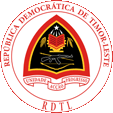 |
seit/since 2007, Wappen von Osttimor – coat of arms of East Timor Quelle/Source: en:User:Vino4u, Public domain, via Wikimedia Commons |
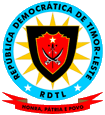 |
2002–2007, Wappen von Osttimor – coat of arms of East Timor Quelle/Source: Jam123, CC0, via Wikimedia Commons |
 |
1935–1976, Wappen von Portugiesisch-Timor – coat of arms of Portuguese Timor, Quelle/Source, nach/by: Wikipedia (D) |
| Das heutige Wappen von Osttimor wurde am 18.01.2007 angenommen und geht auf ein Wappen zurück, das vom Widerstand während der indonesischen Besatzung verwendetet wurde. Es symbolisiert den Erdball und auf ihm das Land Osttimor. Das Wappen zeigt die Silhouette des Berges Tatamailau in Schwarz mit einem gel-roten Rand, darin einen weißen fünfzackiger weißer Stern, ein rotes offenes Buch, vor einem goldgelben Zahnrad, zwischen zwei goldenen Reisähren, unterhalb eine Kalaschnikow gekreuzt mit einem goldenen timoresischen Speer (Diman), oberhalb eines goldenen timoresischen Bogens (Rama-inan). Das weiße Spruchband unterhalb des Berges zeigt in roter Schrift die portugiesischen Worte: "Unidade, Acção, Progresso" → "Einheit, Bewegung, Fortschritt". Der außen herum liegende, rotumrandete weiße Ring zeigt oben den Namen des Landes in Portugiesisch und unten die Abkürzung: "RDTL". |
The current coat of arms
of East Timor was adopted on 18th of January in 2007 and goes back to a coat
of arms used by the resistance during the Indonesian occupation. It
symbolises the globe and on it the country of East Timor. The coat of arms shows the silhouette of Mount Tatamailau in black with a yellow-red border, within it a white five-pointed white star, a red open book, in front of a golden yellow cogwheel, between two golden ears of rice, below a Kalashnikov crossed with a golden Timorese spear (Diman), above a golden Timorese bow (Rama-inan). The white banner below the mountain shows in red letters the Portuguese words: "Unidade, Acção, Progresso" → "Unity, Movement, Progress". The red-edged white ring around the outside shows the name of the country in Portuguese at the top and the abbreviation "RDTL" at the bottom. |
| Das
vorher gültige Wappen wurde am 20.05.2002 offiziell angenommen. Es war eher
ein Siegel, und zeigte innerhalb eines hellblauen Ringes, der den
Namen des Staates trug einen goldenen Stern mit 14 Spitzen. Die Zahl 14
bezog sich wahrscheinlich auf die Anzahl der in der CNRM (ab 1998: CNRT) – einer Art
Dachverband aller anti-indonesischen Widerstandsgruppen –
zusammengeschlossenen Organisationen. Auf dem Stern lag ein schwarz-roter Schild mit verschiedenen Waffen und einen weißen Stern. Dieser Schild ist das Symbol der CNRM. Eine dieser CNRM-Gruppen war die FALINTIL, deren Motto zum Staatsmotto wurde, dargestellt in dem roten Spruchband unterhalb des Schildes: "HONRA, PÁTRIA E POVO" → "Ehre, Vaterland und Volk" |
The
previously used coat of arms was officially adopted on 20th of May in 2002. It
was more like a seal and showed within a pale blue ring which carryed the name of
the state a golden star with 14 points. The number 14 was probably a hint to the
number of the in the CNRM (from 1998: CNRT) – a kind of parent organization of all
anti-Indonesian resistance groups – joined organizations. On the star was positioned a black-red shield with various weapons and a white star. This shield is the symbol of the CNRM. One of this CNRM groups was the FALINTIL. Its Motto became the motto of the state represented in the red banner below the shield: "HONRA, PÁTRIA E POVO" → "Honor, Fatherland and Nation" |
| Quelle/Source: Wikipedia (DE), Volker Preuß | |
Landkarte – Map: |
Lage – Position: |
Landkarte des Landes – Map of the Country: |
|
|
| Zahlen und Fakten – Numbers and Facts: | |
|
|
|
|
|
|
|
|
|
|
|
|
|
|
|
|
|
|
| Die Kolonialisierung der Insel Timor wurde seit dem Beginn des 16. Jahrhunderts durch Portugal betrieben. Im Jahre 1586 wurde offiziell die Kolonie Portugiesisch-Timor gegründet, jedoch nahmen die Niederlande im Jahre 1688 den westlichen Teil der Insel in Besitz. Im Jahre 1895 wurde die Insel formell zwischen Portugal und den Niederlanden geteilt. Von 1942 bis 1945 war sie vorübergehend von Japan besetzt. Nach Abzug der Japaner wurde auch im östlichen Teil der Insel die Kolonialverwaltung wieder hergestellt. Gegen die portugiesische Administration erhob sich vereinzelt bewaffneter Widerstand. Am 11.06.1951 erklärte Portugal seine Kolonie Portugiesisch-Timor zu einer Überseeprovinz und 1972 sogar zur Autonomen Region. Nach dem Zusammenbruch der Militärregierung in Portugal im April des Jahres 1974 kam es in Osttimor zu bewaffneten Auseinandersetzungen im Kampf um die politische Vorherrschaft nach dem absehbaren Ende der portugiesischen Kolonialherrschaft. Auf der einen Seite die "Revolutionäre Front für die Unabhängigkeit Osttimors" (FRETILIN), auf der anderen Seite die "Demokratische Union von Timor" (UDT) und die "Demokratische Volksassoziation von Timor" (APODETI), die wie einige andere politische Gruppen den Anschluss an Indonesien anstrebten. Die FRETILIN brachte den größten Teil des Territoriums von Osttimor unter ihre Kontrolle und proklamierte am 28.11.1975 die “Demokratische Volksrepublik Osttimor”. Die proindonesischen Gruppierungen erklärten einen Tag später (29.11.1975) den Anschluss von Osttimor an Indonesien Am 07.12.1975 griffen reguläre indonesische Truppen in den Bürgerkrieg ein und besetzten Osttimor. Die proindonesischen Gruppierungen bildeten am 17.12.1975 eine Übergangsregierung. Die UNO forderte den Rückzug der indonesischen Truppen, jedoch gliederte Indonesien Osttimor mit Gesetz vom 17.07.1976 als 27. Provinz in das indonesische Staatsgebiet ein. Portugal informierte die UNO im April 1977, dass es seit August 1976 die effektive Souveränität über seine Kolonie nicht mehr ausübe, die gewaltsame Annexion durch Indonesien aber nicht anerkenne. Die UNO bestätigte mit Resolutionen in den Jahren 1977, 1978 und 1979 das Recht des Volkes von Osttimor auf Selbstbestimmung und Unabhängigkeit sowie seine Legitimation, dafür zu kämpfen. Die FRETILIN, die FALINTIL und andere Gruppen setzten den bewaffneten Kampf gegen die indonesischen Besatzer fort, und immer wieder kam es zu Massenprotesten der Bevölkerung. Am 12.11.1991 kam es in der Haupstatdt Dili im Anschluss an eine Massendemonstration zum sogenannten "Santa-Cruz-Massaker". Dabei wurden mindestens 100.000 Osttimoresen auf dem Gelände eines Friedhofs ermordet. Das Volk von Osttimor erreichte nach Aufständen im Zuge eines Machtwechsels in Indonesien im Jahre 1999 – Ende der Ära des Präsidenten Suharto – die offizielle Durchführung einer Volksabstimmung über die volle Unabhängigkeit von Indonesien oder Autonomie innerhalb des Indonesischen Staates. Präsident Habibi, der Nachfolger von Suharto, anerkannte und respektierte den Volksentscheid, welcher mit 80 % zugunsten der Unabhängigkeit von Osttimor endete. Janana Guzmão, der Führer der FRETILIN, wurde freigelassen. Darauf hin überzogen Proindonesische Milizen mit Hilfe der Indonesischen Armee das Land mit einer Terrorwelle, der im August und September 1999 etwa 1000 Osttimoresen zum Opfer fielen. Am 20.09.1999 landeten schließlich UNO-Truppen in Dili, um dem Terror ein Ende zu machen. Die indonesische Volksversammlung erkannte nun die Unabhängigkeit Osttimors von Indonesien offiziell an. Der Kampf gegen den Milizenterror ging aber weiter. Unter anderem aus diesem Grund konnte Osttimor seine Souveränität nicht sofort vollständig wahrnehmen und wurde in einer Übergangszeit durch die UNO verwaltet. Osttimor erlangte die volle Unabhängigkeit am 20.05.2002. Erster frei gewählter Präsident des Landes wurde Janana Guzmão. Der Unabhängigkeitskampf der Osttimoresen gegen Indonesien kostete von 1976 bis 2002 ca. 250.000 Menschen das Leben. |
| Quelle/Source: UNPO, Wikipedia (DE), Volker Preuß |
| The colonialization of Timor Island was powered by Portugal since the beginning of the 16th century. In the year 1586 was officially established the Colony of Portuguese Timor, however in 1688 the Netherlands appropriated the western part of the island. In 1895 the island was formally partitioned between Portugal and the Netherlands. Between 1942 and 1945 it was in passing occupied by Japan. After the withdrawal of the Japanese the colonial administration was restored also in the eastern part of the island. Against the Portuguese administration started sporadical armed resistance. On 11th of June in 1951 Portugal declared its Colony of Portuguese Timor to an overseas province and in 1972 even to an autonomous region. After the collapse of the military government in Portugal in April of the year 1974 started in East Timor armed quarrels in the struggle for the political predominance after the foreseeable end of the Portuguese colonial rule. On the one side the "Revolutionar Front for the independence of East Timor" (FRETILIN), on the other side the "Democratic Union of Timor" (UDT) and the "Democratic People's Association of Timor" (APODETI); one like the other political groups which aimed for the annexion by Indonesia. The FRETILIN brought nearly the whole area of the territory of East Timor under its control and proclaimed on 28th of November in 1975 the “Democratic People’s Republic of East Timor”. The pro-Indonesian groups declared one day later (29th of November 1975) the union of East Timor with Indonesia. On 7th of December in 1975 intervened regular Indonesian troops in the civil war and occupied East Timor. The pro-Indonesian groups established on the 17th of December in 1975 a provisional government. The UNO demanded the withdrawal of the Indonesian troops, but Indonesia incorporated East Timor per statute from the 17th of July in 1976 as 27th province into the Indonesian sovereign territory. Portugal informed the UNO in April of 1977 that it since August 1976 no longer performed the effective sovereignty over its colony and that it not recognizes the forcible annexation by Indonesia. The UNO confirmed by resolutions in the years 1977, 1978 and 1979 the right of the people of East Timor for sovereignty and independence as well as its legitimation to fight for those. The FRETILIN, the FALINTIL and other groups continued the armed struggle against the Indonesian garrisons, again and again there were mass protests of the people. In the capital Dili there was happen on 12th of November in 1991 the so named "Santa Cruz Massacre" following an mass demonstration. Here were murdered at least 100.000 of East Timorese on the terrain of a cemetary. After riotings the people of East Timor achieved in context with a change of government in Indonesia in the year 1999 – end of the era of President Suharto – the official execution of a referendum about the full independence from Indonesia or autonomy within the Indonesian state. President Habibi – the successor of Suharto – recognized and respected the referendum, which endet with 80% for the independence of East Timor. Janana Guzmão – the Leader of the FRETILIN – became released. After that pro-Indonesian militia coated the country supported by the Indonesian Army with a wave of terror in which died ca. 1.000 East Timorese in August and September 1999. On the 20th of September in 1999 finally debarked UNO troops in Dili to finish the terror. The Indonesian Parliament now officially recognized the independence of East Timor from Indonesia. But the fight against the terror of the militia continued. Because of that East Timor could not get immediately its full sovereignty and was in passing administered by the UNO. East Timor achieved the full independence on the 20th of May in 2002. First free elected president of the country became Janana Guzmão. The struggle for independence of the East Timorese against Indonesia between 1976 and 2002 costed ca. 250.000 people's life. |
| Quelle/Source: UNPO, Wikipedia (DE), Volker Preuß |
| Der Name der Insel "Timor" kommt aus der malaiischen Sprache und bedeutet "Osten". Damit wurde die geographische Lage der Insel östlich der Hauptinsel Java beschrieben. "Osten" im Sinne von "Ost"-Timor heißt auf portugiesisch "Leste", auf Tetum "Loro Sa'e" und in Bahasa Indonesia (Indonesisch) "Timur". Daraus ergeben sich die Namen des Landes: "Timor Leste", "Timor Loro Sa'e", "Timor Timur". | The name
of "Timor" Island descends from the Malaysian language and means "East". In
this way is described the geographical position of the island eastern of the
main island Java. "East" in the significance of "East"-Timor means in Portuguese "Leste", in Tetum "Loro Sa'e" and in Bahasa Indonesia (Indonesian) "Timur". From that come the names of the country: "Timor Leste", "Timor Loro Sa'e", "Timor Timur". |
| Quelle/Source: Wikipedia (DE), Volker Preuß | |